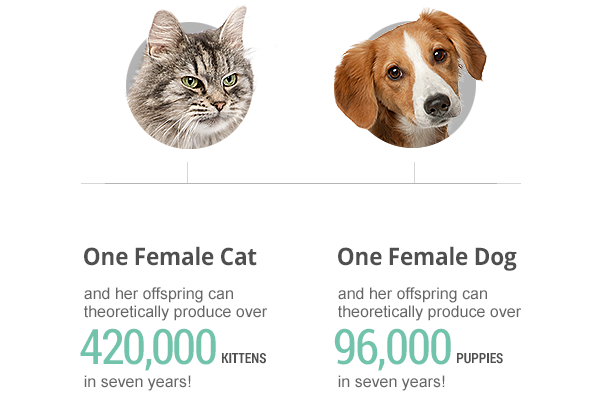Now that we are home and settled and sifting through all that we’ve seen and learned at our latest shelter visits, I am embracing every opportunity to share all that we learned visiting southern shelters.
Nancy and her dog Edith Wharton (my fiftieth foster dog who signs books with me) accompanied me to a speaking engagement last week. The wide eyes and the occasional tears in the audience told me that we are correct in our belief that it is not that people don’t care that dogs are suffering and dying in animal shelters, but that they simply don’t know.
In Lancaster County, where we were, Amish puppy mills are the scourge. As I’ve learned more about those mills, I realize the mentality is somewhat similar to what I’ve witnessed in parts of the south. The dogs are viewed more as livestock than pets. The Amish make money on puppies, they are not pets, their only value is in breeding and selling the dogs.
People buy from these puppy mills because of convenience and price. It’s getting harder to buy a puppy in a pet store or even to find one at a local shelter around here. I hear complaints all the time about how hard it can be to adopt from some rescues who make adopters jump through hoops or install fences or demand more information than the secret service in their background checks.
And reputable breeders charge a lot of money for puppies, as well they should—it costs a lot to raise healthy puppies and I doubt that most breeders are getting rich for their efforts.
The internet makes it very easy to shop the Amish puppy mills. Online, they aren’t labeled ‘puppy mill’ or even necessarily Amish, after all, people who still use buggies for transport can’t possibly be selling puppies online. Having lived amongst them for some time now, I can assure you that the Amish are quite savvy when it comes to using English technology and trust to make money.
(I don’t want to get sidetracked here by puppy mills, of which I am no expert, but my visit to Lancaster has just left them on my mind.)
A few hours after I returned home, I had puppies of my own to deal with. A mama dog and her ten 3-day old puppies arrived at my house via a woman on the board of a shelter in Northwest, PA. Regina is an experienced transporter, runs a potbelly pig rescue, and volunteered to drive mama and pups to me (almost five hours each way!) so that she could get them out of that shelter as quickly as possible, knowing it was a stressful and dangerous place for a mama and newborn pups.
The shelter has a policy of spay/abort for pregnant animals, but this mama arrived at their door too close to delivery and after the insistence of an employee, the board made an exception for her. OPH agreed to take her and I agreed to foster her. The puppies were born at the shelter three days after the scheduled spay surgery, a fact which haunts me even now when I wonder what a veterinarian performing a spay does when he/she discovers ten healthy full-term puppies in a mama’s uterus.

Regina couldn’t stay long, she needed to get back on the road, but we talked briefly about the struggles of their shelter with spay/neuter. She is adamant they can’t send animals out unaltered and trust the adopters to come back to have them spayed/neutered, but getting animals ‘fixed’ takes veterinarians and time and money. Most people don’t want to wait on a puppy that isn’t quite old enough to be spayed/neutered (the safe age for surgery is debated even among veterinarians), or even a few days or a week for the dog they’ve just met and want to adopt to today.
I’ve often wondered why any shelter that can claim a no-kill status doesn’t simply schedule and spay/neuter all of their animals in the order in which they arrive at the shelter (and complete their stray hold if necessary). If there’s no danger of it being necessary to destroy the dog, why not spay/neuter it as soon as possible? Is it lack of access or the expense?
If the costs are paid for by the adopter or the rescue that pulls the dog, it must come back to access. Veterinarians operating on shelter animals generally do it at a reduced rate. They can probably only offer so much of that kind of care, and there are likely a limited number of vets who will do it at all. We need more vets in underserved areas. Perhaps a program similar to Teach for America could offer school debt relief to veterinarians willing to work in rural communities.
The only medical treatment required by every state of shelter animals is that they have a rabies vaccination. I dream of a day when every state also requires that every shelter animal being adopted or pulled by rescue must be spayed/neutered (or for animals too young for the surgery, sign a binding contract to have it done). But for a law like that, all shelters would have to have access to veterinarians and a budget to pay for it. As my conversation with Regina and so many others underline, we cannot count on adopters (or rescues) to spay and neuter their animals.
When states began requiring rabies vaccinations, rabies infection was literally halted in its tracks. Now, there only 400-500 reported cases of rabies in pets per year and only 2 cases of human rabies reported as recently as 2017. See? Regulation was the key.
I don’t think spay/neuter is the answer to the crisis of shelter animals suffering and dying, but I do think it is a big piece of the puzzle and perhaps the easiest and most obvious to address. Because pet owners have such wildly varying opinions on it, it’s impossible (and I believe wrong) to legislate that all animals be spayed/neutered but requiring it of animals housed in government-funded shelters makes sense. After all, it’s tax money that funds public shelters.
It’s common sense that if every animal leaving your shelter is spayed and neutered, eventually, fewer animals will come in. And fewer animals means huge cost savings and better outcomes for the animals that do land in the shelters. Cost savings and fewer animals means less taxpayer money required.

A recent NY Times piece by Alexandra Horowitz called into question the push to ‘de-sex’ animals and sparked widespread discussion. In my (admittedly bias) opinion, choosing not to ‘de-sex’ your dog (the term used in the article which in itself colors the debate), is a first-world problem. Until we are no longer killing adoptable animals by the hundreds of thousands each year, I don’t think we get to talk about options.
At a shelter in Tennessee, we were about to walk out the door when a pickup truck pulled in and a woman with a box got out. “Here she comes again,” said the shelter director. The same woman brought every litter her dog had to the shelter as if she was bringing them a gift. I guess she didn’t believe in de-sexing her dog, but she had no qualms about dumping the results on the public shelter.
In a perfect world, responsible pet owners make responsible decisions about their animals. Sadly, this isn’t a perfect world. Maybe it’s time leadership in our communities demand some responsibility instead.
Until Every Cage is Empty,
Cara
Follow us on Facebook and Instagram and subscribe to this blog (subscription button up top on the right) to help raise awareness of adoptable dogs suffering and dying in shelters.
Together, we can let the dogs out.








Martha Kennedy
I read the interview yesterday when you posted it and I was enraged. Then I looked at her photo and read between the lines. “De-sexing animals” is really fucking stupid as a term. I am not sure she understands the misery dogs go through when they’re not “de-sexed.” How they are literally DRIVEN to mate and if such an opportunity doesn’t exist in their world, they will go find it. This means more loose dogs, more dogs killed by cars or farmers’ guns or coyotes or each other.
I don’t think this author knows much about a mamma dog who, living out in the back of beyond, searches wildly for a safe place to birth her puppies in a land of predators and ends up at the bottom of a dry well from which she has to be rescued or she will die. The stories are endless as you well know.
As for puppy mills? I have “bought” one dog in my life from a pet store and she was so overbred that she killed her “mom” and went after her “sister” (not literally her family but dogs she’d lived with all her life). The vet who put this beautiful young yellow lab down said, “Her mom was probably her sister, her dad her brother.” Amish puppy mill in Iowa. The vet and I both cried as that dog died.
That said, have had a maybe a dozen purebred dogs someone got at a pet store, dogs that ended up needing to be rescued. Dogs that should not have been born — mostly Siberian huskies who demand more and other from an “owner” than some other breeds. I have two now. Where I live are Akbash breeders and mini-Aussie breeders. How my dogs came to me? someone tied Bear up outside a gas station, someone tied Teddy up outside a store.
I love dogs but they are not “fur-babies” or “little men” or “doggos” or anything resembling a human being (probably part of why I love them). This woman is irresponsible, ignorant and sentimental. She should bring her anorexic ass out to the real world where dogs suffer and die because there are just too many of them.. I also believe that dogs should be neutered/spayed whenever it is safe and healthy for them to be.
As for your thought that shelters should do this, I agree with the principle, but my shelter couldn’t possibly afford to do that. That’s another problem for another irate response, I guess.
Cara Sue Achterberg
Your reaction was much like mine when I read her article the first time. It does seem out of touch and it did make me want to grab her and drag her down to one of the counties in Alabama where they don’t have a shelter and they sometimes just shoot the stray animals.
Funding is an issue in every shelter, but if the state declared that shelter animals had to be spayed and neutered, they would also be obligated to pay for those surgeries. Our states spend far more on far less important things. And in the long run, solving this problem would save everyone money and plenty of lives.
Thanks for sharing your story – we need to keep talking about this.
Martha Kennedy
Our shelters do what many do. They charge $50 above the cost of adoption for an un-neutered animal (since they adopt out puppies too young to fix). You get the money back with proof of neutering. I’m not saying that’s great, but it’s something.
Cara Sue Achterberg
Money is many times a powerful incentive. Our rescue does the same (only we do $75, but I think we should charge more, since they will get it back and more money makes that more likely).
Martha Kennedy
Definitely!
Barbara Abbott
I can’t locate the comment you made once about few rescue puppies available in Canada. I don’t remember why that was the case. I haven’t thought much about this part of the cost of rescue. Male neuters are so much less expensive than spays and recovery and care are also different. That has to be considered. I, of course, believe that regulation regarding government funded shelters would make a big difference, but that R word is not very popular.
I worked at my Dad’s veterinary hospital many of my young years. Some of the most awful memories are of a a family of young children standing around the exam table where Dad was examining a newly purchased puppy. Everyone was in love and my Dad had to tell them they needed to return this precious puppy because it was too sick and would not survive. I think many of them were from Lancaster. It was heartbreaking for everyone in the room. The Amish treat their horses terribly- an entirely different way of looking at the world.
I don’t have answers- just so glad you continue to make us think.
Michelle Katzman
I love your idea about a program like TEACH FOR AMERICA for spay/ neuter. There is also programs like REMOTE AMERICA MEDICAL (RAMUSA.org) that provides free care for medical dental and optometry for people in needy counties. Maybe they would be willing to include volunteer veterinarians into their weekend visits…. or separately have training vet students with a faculty and vet techs do a mission.